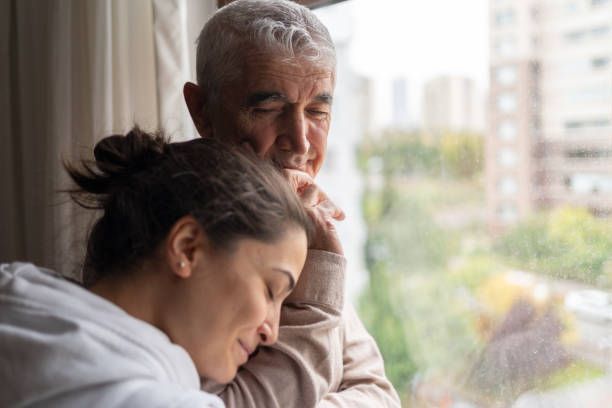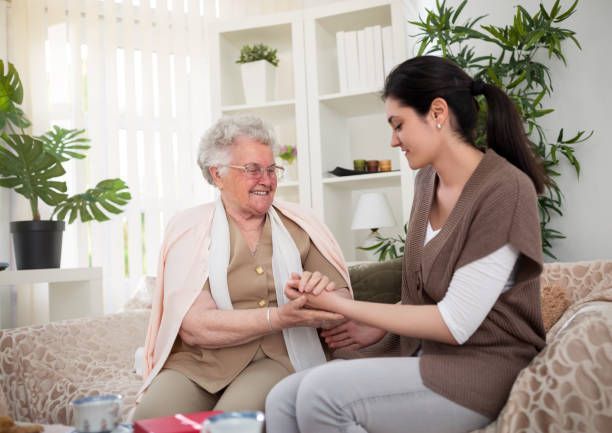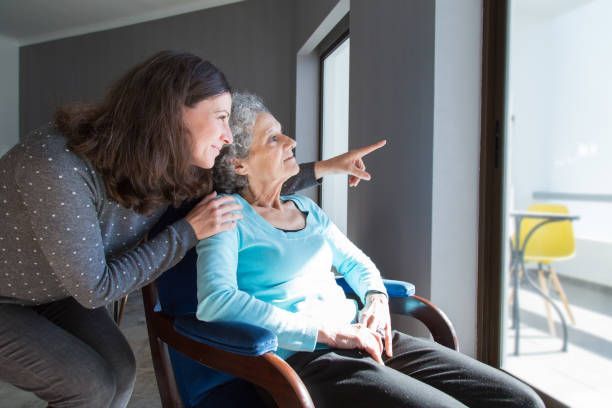7 Exercise Tips and Ideas for Elderly with Diabetes
7 Exercise Tips and Ideas for Elderly with Diabetes
At 7 Day Home Care, we emphasize the importance of maintaining an active lifestyle for managing diabetes, particularly among seniors. Regular physical activity plays a crucial role in controlling blood sugar levels, enhancing insulin sensitivity, and reducing the risk of complications such as heart disease and neuropathy. Exercise not only helps with weight management, which is vital for those with Type 2 diabetes, but also improves cardiovascular health, circulation, and overall energy levels. By staying active, individuals with diabetes can experience improved mood and mental well-being, helping to combat the depression and anxiety often associated with chronic conditions. Our tailored exercise programs ensure that seniors engage in safe, effective activities that align with their abilities, supporting long-term health and vitality.

Maintaining an Active Lifestyle is Essential for Managing Diabetes
Living with diabetes presents unique challenges, especially for older adults. Maintaining an active lifestyle is essential for managing diabetes and improving overall health. At 7 Day Home Care, we understand the importance of tailored exercise programs for seniors with diabetes. In this guide, we'll explore the best exercises for elderly individuals with diabetes, the benefits they offer, and how to safely incorporate them into a daily routine.
Understanding Diabetes in the Elderly
Diabetes is a chronic condition that affects how the body processes blood sugar (glucose). The two most common types are:
- Type 1 diabetes: The body doesn’t produce insulin.
- Type 2 diabetes: The body doesn’t use insulin effectively. This is more common in older adults due to factors like aging, reduced physical activity, and weight gain.
Importance of Exercise in Managing Diabetes
For seniors with diabetes, exercise plays a vital role in managing the condition. Regular physical activity provides numerous benefits, including:
- Improved Insulin Sensitivity: Exercise helps the body absorb glucose more effectively, reducing blood sugar levels.
- Weight Management: Exercise burns calories and reduces body fat, which is essential for controlling Type 2 diabetes.
- Better Cardiovascular Health: It helps lower blood pressure and cholesterol, reducing the risk of heart disease, a common complication in diabetics.
- Enhanced Circulation: Exercise promotes better blood flow, lowering the risk of complications like neuropathy.
- Mood and Energy Boost: Physical activity releases endorphins, improving mood and combating depression and anxiety, which are prevalent in chronic conditions like diabetes.
Top Exercises for Seniors with Diabetes
Selecting the right exercises for elderly individuals with diabetes requires consideration of their physical abilities and any existing health conditions. Below are the best exercises for seniors with diabetes and how to safely incorporate them.
1. Walking
Why It’s Beneficial: Walking is a low-impact exercise that helps improve cardiovascular health, enhance insulin sensitivity, and aid in weight management. It's simple, effective, and can be done almost anywhere.
How to Incorporate:
- Start with 10-15 minute walks and gradually increase to 30 minutes per day.
- Aim for at least 5 days a week of walking.
- Track progress with a fitness tracker or pedometer.
Safety Tips:
- Wear supportive shoes to prevent foot injuries.
- Stick to flat, even surfaces to minimize fall risk.
2. Chair Exercises
Why It’s Beneficial: For seniors with limited mobility or balance issues, chair exercises provide a safe, low-impact way to strengthen muscles and improve flexibility.
How to Incorporate:
- Seated leg lifts: Sit in a chair and lift one leg at a time.
- Arm curls: Use light weights for seated bicep curls.
- Seated marches: Lift knees while seated, alternating legs.
Safety Tips:
- Use a sturdy chair with no wheels for stability.
- Begin with slow, controlled movements and gradually increase repetitions.
3. Strength Training
Why It’s Beneficial: Strength training helps build muscle mass, which improves insulin sensitivity and glucose use. It also supports bone health, reducing the risk of osteoporosis.
How to Incorporate:
- Use light weights or resistance bands.
- Focus on major muscle groups such as the legs, arms, and back.
- Perform strength training 2-3 times per week, with rest days in between.
Sample Exercises:
- Wall push-ups: Stand facing a wall, perform push-ups.
- Seated leg extensions: Extend legs while sitting in a chair.
- Bicep curls: Use light weights to perform curls while seated or standing.
Safety Tips:
- Start with light weights, increasing as strength improves.
- Maintain proper form to avoid injury.
4. Yoga and Tai Chi
Why It’s Beneficial: These gentle exercises focus on flexibility, balance, and relaxation. They reduce stress, improve mental well-being, and help control blood sugar levels.
How to Incorporate:
- Attend beginner-level classes or use senior-friendly instructional videos.
- Practice for 20-30 minutes, 2-3 times a week.
- Focus on balance-enhancing poses.
Safety Tips:
- Use a chair or wall for balance support if needed.
- Avoid poses that cause discomfort or strain on joints.
5. Swimming and Water Aerobics
Why It’s Beneficial: These are low-impact exercises that provide a full-body workout without putting stress on the joints. They improve cardiovascular health and strengthen muscles.
How to Incorporate:
- Join a senior-friendly swimming or water aerobics class.
- Aim for 30-minute sessions two to three times a week.
Safety Tips:
- Swim in supervised areas with lifeguards present.
- Start with gentle exercises and increase intensity gradually.
6. Cycling
Why It’s Beneficial: Cycling, either on a stationary bike or outdoors, improves cardiovascular health and strengthens leg muscles. It’s gentle on the joints, making it an excellent choice for seniors with arthritis or joint pain.
How to Incorporate:
- Use a stationary bike at home or at a gym.
- Start with 10-15 minute sessions, gradually increasing the duration.
Safety Tips:
- Adjust the bike for comfort.
- Wear a helmet if cycling outdoors, and follow safety guidelines.
7. Flexibility and Stretching Exercises
Why It’s Beneficial: Stretching exercises help maintain joint mobility and flexibility, reduce stiffness, and improve range of motion.
How to Incorporate:
- Perform stretches for major muscle groups as part of a warm-up or cool-down routine.
- Stretch for 15-30 seconds per movement, avoiding bouncing or jerking motions.
Safety Tips:
- Stretch slowly and stop if any discomfort occurs.
General Exercise Guidelines for Seniors with Diabetes
When starting an exercise program, seniors with diabetes should follow these guidelines to ensure safety:
- Consult a Healthcare Provider: Always consult with a doctor or diabetes educator before starting a new exercise routine.
- Monitor Blood Sugar: Check blood sugar levels before and after exercise. Keep glucose tablets or juice handy in case of low blood sugar (hypoglycemia).
- Stay Hydrated: Drink plenty of water before, during, and after exercise to stay hydrated.
- Choose Proper Footwear: Wear well-fitting shoes, and regularly inspect feet for any signs of injury.
- Start Slowly: Gradually increase the duration and intensity of exercise to avoid injury.
- Listen to Your Body: If you feel dizzy, fatigued, or unwell during exercise, stop and rest.
Exercise is a key component in managing diabetes for elderly individuals. From walking and chair exercises to yoga and swimming, there are plenty of safe and effective ways to stay active. At 7 Day Home Care, we focus on creating personalized exercise plans that cater to the unique needs and abilities of our clients with diabetes. Regular physical activity not only helps control blood sugar levels but also improves overall health, mood, and quality of life.
By incorporating these exercises into your routine and following the appropriate guidelines, seniors with diabetes can live healthier, more independent lives. Always consult with healthcare professionals before starting any new exercise regimen to ensure it fits your individual needs. 7 Day Home Care is licensed by the New York State Department of Health to provide home care services in Manhattan, Queens, Brooklyn, Nassau County, and Suffolk County, New York. To learn more about our home care services, please call 516-408-0034.
Brian Callahan
7 Day Home Care










